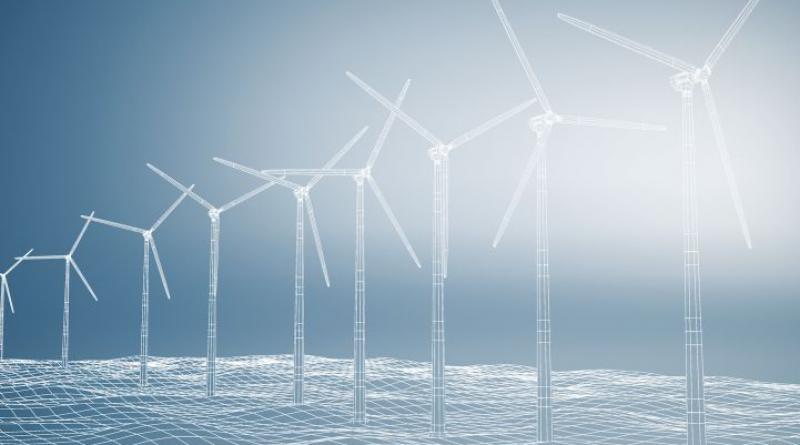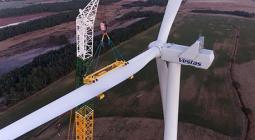GE looks to 3D printing to build next generation of taller, less costly wind turbines.

GE announced today that it’s developing skyscraper-sized wind turbines with massive 3D-printed bases. The conglomerate plans to work with partners in the construction industry to produce both a printer and materials that could eventually be deployed around the world.
Taller turbines can capitalize on stronger winds at higher altitudes, and the structures support larger blades that generate more power. But building bigger turbines makes transporting the pieces needed to put it together a logistical nightmare. GE hopes to 3D print the base of a turbine wherever they want to place it, so that they won’t need to haul around such a gigantic hunk of concrete or steel. The company says its onshore turbines could reach up to 200 meters tall, which is taller than the Seattle Space Needle and more than double the average height for wind turbines in the U.S. today.
Onshore wind turbines have had a massive growth spurt since the 1980s, when they averaged a height of about 20 meters in the US — not counting the blades. Under ideal conditions, those earlier turbines had a maximum output of about 100kW per turbine. By 2017, those numbers grew to 84 meters tall with an output of more than 2MW (2000kW). Turbines in parts of Europe, where there aren’t as strong winds closer to the ground, can reach greater heights. One of the tallest onshore turbines, in Gaildorf, Germany, towers 178 meters tall. GE wants to go even bigger.
Since it’s one of the world’s largest manufacturers of wind turbines, GE could usher in a whole new era for wind turbines design and construction. But it won’t be the first company to look into 3D-printing for wind energy. Startup RCAM Technologies, with $1.25 million in funding from the California Energy Commission, set out in 2017 to build two turbine towers in a similar fashion — their research is still ongoing. That means GE could be the first to make wind turbines with a 3D-printed base commercially available. The company completed its first prototype in October 2019, and it plans to begin production in 2023.
“What you’re looking at is a technology that enables the industry to go to a new level,” says Paul Veers, chief engineer at the National Wind Technology Center and a senior research fellow at the National Renewable Energy Laboratory, of 3D printing. The new technology could potentially reduce the amount of time and labor needed to install turbines, especially onshore, where turbines tend to be smaller than their offshore counterparts (it’s easier to transport materials by sea). “It’s a stepping stone into the next generation of wind plants,” says Veers.
GE believes it can build a 160-meter tall, 5MW turbine that generates 33 percent more power yearly than a turbine half the size — at a “significant” cost savings. And since it’s usually easier to transport a 3D-printer than a 100 to 200 meter tower, it will be able to bring renewable wind energy to new markets, the company tells The Verge. It would cut down the greenhouse gas emissions coming from transporting giant structures too.
18 June 2020
IEEFA




